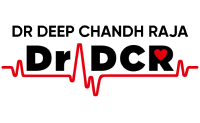The human heart is a muscular pump that contracts and relaxes about 100,000 times each day, moving around 8,000 litres of blood daily. Roughly twice the size of a human fist, the heart pumps blood through a network of blood vessels that, if stretched out, would measure over 100,000 kilometres. The heart sends oxygen-rich blood through arteries to the body's organs. At the same time, veins bring oxygen-depleted blood back to the lungs via the heart. This network resembles a tree: the main artery, or aorta, acts as the "trunk" and branches into large arteries. These arteries branch into smaller vessels, eventually leading to a fine mesh called the capillary network.
Components of the Heart and Vascular System
The heart and vascular system must work together to keep the heart functioning. The key components include:
- Heart Muscle (Myocardium): The muscular layer of the heart.
- Heart Chambers: The heart has two upper chambers (left and right atria) and two lower chambers (left and right ventricles).
- Heart Valves: The left-sided valves are the mitral and aortic valves; the right-sided valves are the tricuspid and pulmonary valves.
- Electrical System: Controls the heartbeat by coordinating the actions of the heart's structures.
- Coronary Blood Vessels: The coronary arteries supply oxygenated blood to the heart, while coronary veins return deoxygenated blood to the right atrium.
- Systemic Circulation: Arteries carry oxygenated blood to the organs, and veins return deoxygenated blood to the heart.
- Pulmonary Circulation: Pulmonary arteries carry deoxygenated blood to the lungs, and pulmonary veins bring oxygenated blood back to the heart.
Two Circulatory Systems in the Human Body
The human body has two connected blood circulatory systems:
- Systemic Circulation: Delivers blood to organs, tissues, and cells, supplying them with oxygen and essential nutrients.
- Pulmonary Circulation: Adds fresh oxygen to our blood and removes carbon dioxide.
Two Functional Systems in the Heart
The heart also has two distinct functional systems:
- Right Heart: Includes the right atrium right ventricle, and supports pulmonary circulation.
- Left Heart: Includes the left atrium left ventricle, and supports systemic circulation.
Heart Functioning
- Diastole (Relaxation Phase): During diastole, the atria (upper chambers) fill with blood. The atrial walls then contract, pushing the blood through the valves into the relaxed ventricles (lower chambers). The valves close tightly during this phase to prevent blood from flowing backwards.
- Systole (Contraction Phase): Once the ventricles are complete, the systolic phase begins. The ventricular walls contract forcefully to push the blood out of the heart and into the arteries.
How the Heart Functions in Harmony
The heart's coordinated function is controlled by a group of cells in the right atrium called the Sino-atrial (SA) node. This node sends electrical impulses that signal the heart chambers when to contract. Since the SA node regulates the heart's pace and rhythm, it is often called the natural pacemaker.
How do the Heart and Circulatory System Work?
For continuous blood circulation, the left and right sides of the heart must work together. Here's how blood flows through the heart, lungs, and body:
- The right atrium receives deoxygenated blood from the superior and inferior vena cava.
- When the atrium contracts, the blood moves from the right atrium to the right ventricle through the tricuspid valve.
- Once the ventricle is filled, the tricuspid valve closes.
- The ventricle then contracts, pushing blood through the pulmonary valve into the pulmonary artery.
- The pulmonary artery carries the blood to the lungs, where it gets oxygenated.
- The oxygenated blood returns to the heart, entering the left atrium via the pulmonary veins.
- The left atrium contracts, sending the blood into the left ventricle through the open mitral valve.
- When the ventricle is complete, the mitral valve closes.
- The left ventricle contracts, sending oxygenated blood into the aorta and distributing it to the rest of the body.





.jpg)